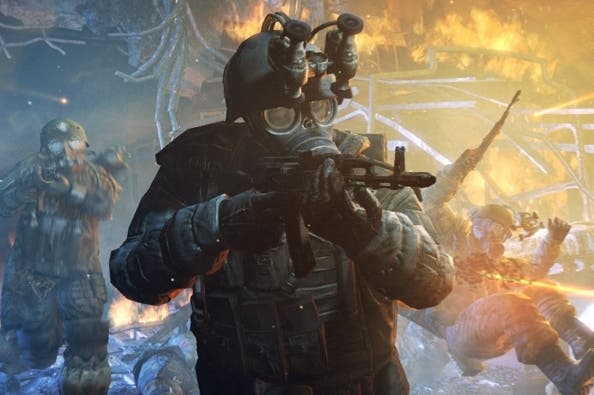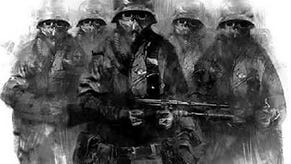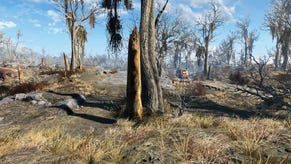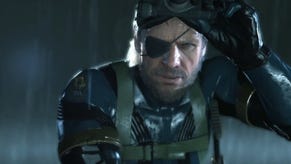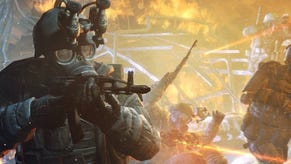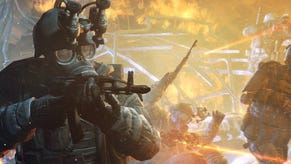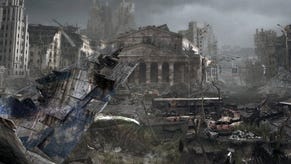Face-Off: Metro: Last Light
Going underground.
| Xbox 360 | PlayStation 3 | PC | |
|---|---|---|---|
| Disc Size | 6.0GB | 6.6GB | Steam Download |
| Install | 6.0GB (optional) | 2.9GB (mandatory) | 8.5GB (mandatory) |
| Surround Support | Dolby Digital | Dolby Digital, DTS, 5.1LPCM, 7.1LPCM | Set-up Dependant |
With the release of Metro: Last Light, developer 4A Games brings to the table the most technically dazzling game since Crysis 3 first graced our screens three months ago. Building on its in-house 4A Engine that debuted with cult hit Metro 2033, it's something of a technological wonder, with DirectX 11 features like tessellation, cutting-edge lighting effects and advanced PhysX realising its barren, Pripyat-inspired environments.
The last game ensures that the prowess of the 4A engine is a known quantity on PC and 360. However, this sequel crucially marks the Kiev-based developer's first foray into the world of Sony's PlayStation 3 - giving us a conventional simultaneous triple-format launch. Given how deeply current mid-to-low GPUs are confounded by Metro 2033's rigorous "Frontline" benchmark sequence, the idea that console platforms can handle the more advanced Last Light at even basic settings is an uncertain one.
Similar technical showcases on PC such as Crysis 3 and Battlefield 3 haven't necessarily fared well in the transition to PS3 and 360 in the past, with effects pared-back or removed, native resolutions dropped, tearing added, and even a locked 30FPS being an untenable target once the going gets tough. Pushing back the technological boundaries with next-gen engines inevitably results in a hit when the same game is scaled back to current-gen platforms.
But with just a single-player campaign to focus on, the in-house 4A Engine builds on the strong, scalable fundamentals seen in the last game - itself born from the minds of the S.T.A.L.K.E.R series' chief architects. Three years have passed, and we now have a focus on the DirectX 11 API to bring us improved environmental tessellation, a multitude of on-screen NPCs, cloth simulation physics, plus weather effects ranging from rain, ice and sun. The PC requirements are sky-high if you want to check all the bells and whistles, with an optimal experience demanding the costly GeForce Titan running in tandem with a powerful Core i7 CPU.
When it comes to the 360 and PS3 platforms however, it's less-so about harnessing the raw processing muscle of the most powerful hardware around, and instead a call to the studio's strengths in squeezing the greatest results from static, seven-year-old hardware. To see how close these get to the PC release's standards, we compare image quality for all three versions via our head-to-head videos. To back this up, there's also a weighty 60-strong triple-format comparison gallery for those with a keen eye for fine details.
"The PC game is obviously a step beyond - the console versions are a call to 4A's strengths in squeezing the greatest results from static, seven-year-old hardware."
Alternative comparisons:
To start with the basics, native resolution is slightly dialled back on both platforms. On the 360 side we see a vertically nipped and tucked frame-buffer of 1280x672, while the PS3 operates at an overall lower internal resolution - we reckon it's something very close to 1152x640. On the face of it this sounds like a big advantage for the 360, but in practise the difference is nigh on undetectable to the naked eye.
This is due in no small part to the smart anti-aliasing method being used. Standard to the PS3 and 360 versions is what appears to be post-process anti-aliasing, either 4A's proprietary Analytical Anti-Aliasing (AAA) or perhaps a tweaked version of Nvidia's FXAA. While post-process AA often fails to impress on console, the algorithm used here in Metro: Last Light is among the most refined we've seen - it renders jaggies ostensibly non-existent, with a light shimmer to complex fence-work and spindly foliage being the only stones left unturned.
The PC version goes the extra mile in this regard. By default, it has AAA working in conjunction with FXAA, though both techniques benefit from larger search windows and deeper per-pixel control, like micro-blur and/or micro-sharpen. The overall result is pristine, squeaky clean edges, and is ultimately inexpensive enough to be afforded by any PC setup.
The same can't be said of the super-sample AA option also available in this package - working over the top of the above two processes - which renders the game at up to 4x your selected resolution before down-sampling to your monitor's ideal value. In our experience this proved to be a somewhat expensive luxury, especially while running at resolutions of 1080p with the existing post-process AA methods which still produce great results. That said, 4A reckons that 2x SSAA is actually less of a performance hog than 4x MSAA on a deferred shading engine like Metro's, offering up superior image quality into the bargain.

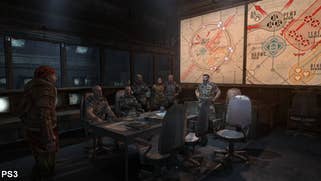
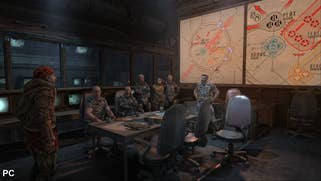



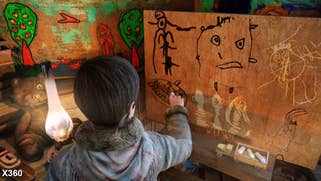
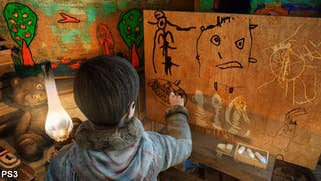
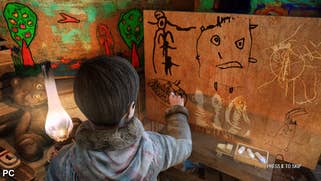
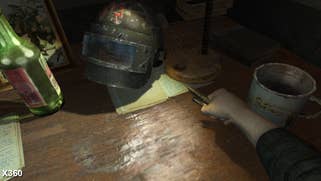
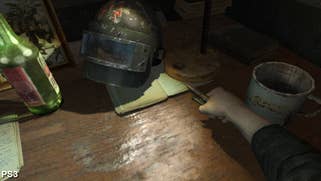
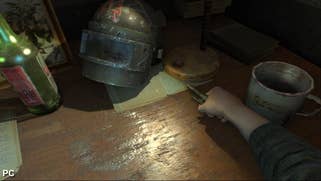
All this serves to present a dark, haunting post-apocalyptic underground. There's an impeccable attention to detail around hub areas such as Bolshoi. From tiny details such as grimy guitar strings, to the dishes on the chef's table, or soldiers playing draughts with coins, the game gives a convincing sense of civil culture in the barracks. Both PS3 and 360 alike bring this world to life wonderfully, though the PC's highest tessellation setting draws out the fullest details in objects and character models.
There are two quality settings for this in total, helping to reduce angular points on geometry to create a more rounded, organic look. According to 4A, the lower setting tessellates selected characters with a three per cent performance drop, while the higher preset tessellates everything on-screen, for a 15 per cent hit to frame-rate (we imagine that these stats will be somewhat GPU dependant).
This isn't to say the console versions are wholly left behind, as all formats feature PhysX support from the get-go. The results have come to define the Metro series' anarchic play-style: subway wall tiles shatter to pieces on shotgun impact, windows smash to shards, and clan banners sway with the breeze. The PC inevitably pulls ahead here in terms of features, with the option for an advanced hardware-accelerated version of the effect, compared to the software implementation used on PS3 and 360. The difference over the console's standard grade of physics isn't immediately obvious, but close inspection shows it adding debris particles that interact with the environment after explosions, plus cloth physics which flinch in specific spots to gunfire.
The series' signature lighting is noticeably more refined on PC too, with accurate light interaction across materials such as glass and metal plates. Compared to the implementation on console versions, this allows light to diffuse naturally through items such as translucent green bottle, with light scattering across the surface to cast a coloured tint. A look at Artyom's busy desk-space also shows the table's varnish reflecting his lamplight with a crisper focal point, while his gas mask visor reveals more accurate reflections of the other table contents.
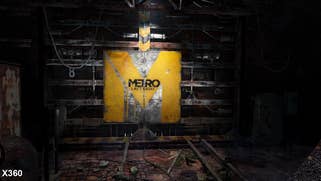
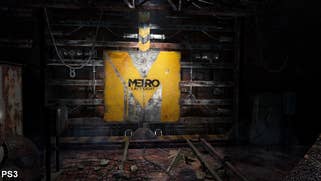

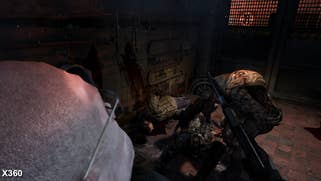
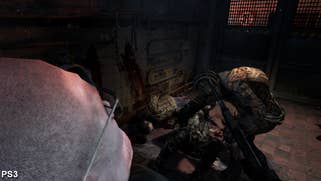
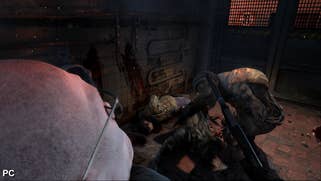
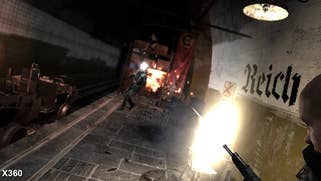

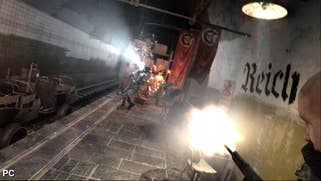
Texture and shadow quality also prove identical between the console releases, save for the slower asset streaming around town hub areas on PS3. This doesn't affect the visuals for the rest of the game, however, where texture quality is indistinguishable in the darkness. Each takes advantage of bilinear filtering to produce three, faint cascades in quality across walls and flooring, where the base asset quality is comparable to the "coarse" medium preset on PC. To illustrate the difference numerically, Metro: Last Light installs a whopping 3.3GB in container files just for textures on PC, while the console versions use little over 1.5GB to the same end.
On top of that, we have parallax occlusion mapping (POM) in effect across surfaces on PC's very high preset. This adds a pop effect to textured rubble, for example, by simulating shadows cast at angles over its bumps and divots. High grade mapping of this sort is sadly absent on PS3 and 360, much like the per-object motion blur which is also missing, though we have seen POM achieved on these platforms before with the enhanced Crysis port.
The PC is easily positioned as the ultimate version, though it does have its drawbacks. For one, playing through the opening Sparta stage with AMD cards such as the HD 7790 resulted in shadow artifacts, causing dark dots and lines to flicker on and off as we approach new interior areas. Once we enter any upcoming room, the glitch stops immediately but reappears in the next area - very strange indeed. For a game so fixated on engaging you with its lighting, this flaw is likely to be addressed sooner rather than later - and isn't an issue on Nvidia cards like the GTX 670 we used for our captures.
Surprisingly absent from the PC release is a dedicated field of view (FOV) slider, which would ordinarily let players widen their peripheral vision of the game world. This has been removed since its appearance in Metro 2033, though 4A Games' staff assures us that the feature is set to return in an upcoming patch, once again allowing players to tweak FOV values via the .cfg file. Curiously, this comes with the fore-warning that these tweaks will distort the proportions of a character's near-field animations, such as reloading or climbing ladders. Even with this open caveat, the option to experiment is very welcome for those unhappy with the game's default 70 FOV.
"Our GTX 670 combined with a Sandy Bridge Core i5 processor clocked at 4.2GHz achieves between 40-50FPS on maximum settings, albeit with no SSAA engaged."
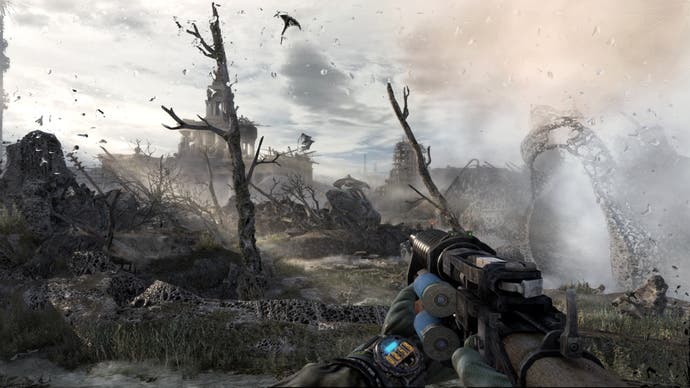

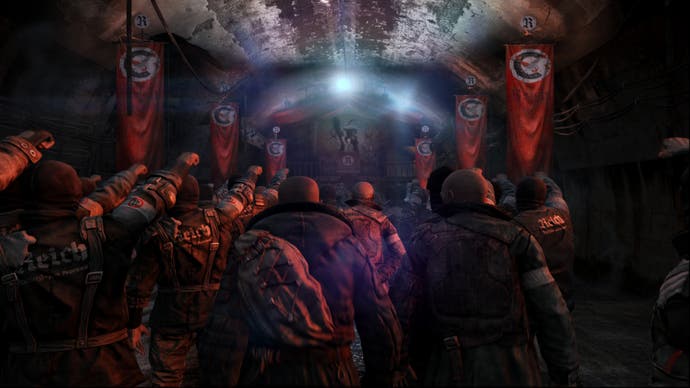

Metro: Last Light - performance analysis
The state of affairs on the visual side reveals little to separate the two platforms, meaning our next stop is performance analysis. The technical set-up here falls in tow with Far Cry 3 on consoles; again, we have a 30FPS target with an adaptive v-sync that consistently resorts to full-screen tearing. To see which platform makes the best of this deal, we run through both battle and cut-scene sequences alike in our video tests.
All being said and done, the PS3's frame-rate is comprehensively higher during combat situations - particularly during the Escape mission where enemy bodies line up in a row. Indoors or out, Metro: Last Light drops as low as a sustained 20FPS on 360, compared to matching moments on PS3 which play out at 25FPS or better. Once more, Bolshoi has Sony's platform struggling a tiny bit more with frame-rate as it attempts to stream textures in, though this isn't a major drawback given the shortness of the segment.
As of writing, no patches have been released for either 360 or PS3. The issue of stability is prevalent across all three versions though, with our playthroughs on PC and 360 platforms bringing about one freeze apiece so far. We've had no experience of crashes on PS3 ourselves, but issues with AI path-finding have backfired on that platform to embarrassing effect. Saddled with Pavel as your sidekick for the first few hours of the game, he once failed to travel forward to prompt the next scene, making a manual reset the only option left after a few minutes of confusion.
Maxed out 1080p performance on PC can also be lop-sided in spots. While far from the optimal specs put to e-paper by 4A Games, our GTX 670 combined with a Sandy Bridge Core i5 processor clocked at 4.2GHz achieves between 40-50FPS on these settings, with no SSAA engaged. However, heavy stuttering kicks in during the first proper shoot-out in the Escape mission, rendering it practically unplayable until we shuffle past the central building. 10FPS becomes the norm in this case alone - entirely unlike the moderate 30FPS frame-rate dips we see during most combat, and lower than even PS3 or 360's worst spells. 4A Games has discussed the scalability of the engine across a range of PC hardware (even including Intel's integrated HD 4000 GPU in its Ivy Bridge chips), so we'll be looking at that in a little more depth in an upcoming feature.
"PS3 operates at a lower res but the performance benefits more than outweigh the marginal visual boost from the additional pixels rendered on the 360 game."
Metro: Last Light - the Digital Foundry verdict
In the final call, clearly the PC version reigns supreme, but it's surprising how well the console versions acquit themselves this late in the console generation. We do miss the tessellated environments, bump-mapped textures, and per-object motion blur of the PC release, but the core experience of Metro: Last Light is impeccably well presented on PS3 and 360 nonetheless. There are no obvious sharp aliased edges or glaringly low-grade models, but instead we have a very refined looking top-shelf shooter that's custom-tailored to the console's strengths.
The only compromise that truly impacts the experience is the excessive screen-tear - but for the most part, a good proportion of the artifacting sinks into the muted colour palette. Between the PS3 and 360 versions, however, there are very few visual difference to parse out from the comparison. On the one hand, Sony's platform offers FMV encodes of a similar quality to PC, while the 360's appear a touch blurred. On the other, texture streaming on PS3 is a weak point if you're looking close at the signs while pacing through bustling underground centres.
The PS3's superior performance tips the scales comfortably in the other direction though; where Microsoft's format can churn out 20FPS to a chaotic scene, Sony's hardware delivers a much smoother response for its 5FPS lead in most situations. After many hours playing through each version, we'd happily continue our subterranean quest on PC if given the choice - which save for one stuttering section is otherwise well optimised. However, the PS3 version of Metro: Last Light takes a well-deserved second spot in the running. Given that this is 4A Games' first fully committed release on the console, this puts the studio in very good stead for future multi-platform projects.
